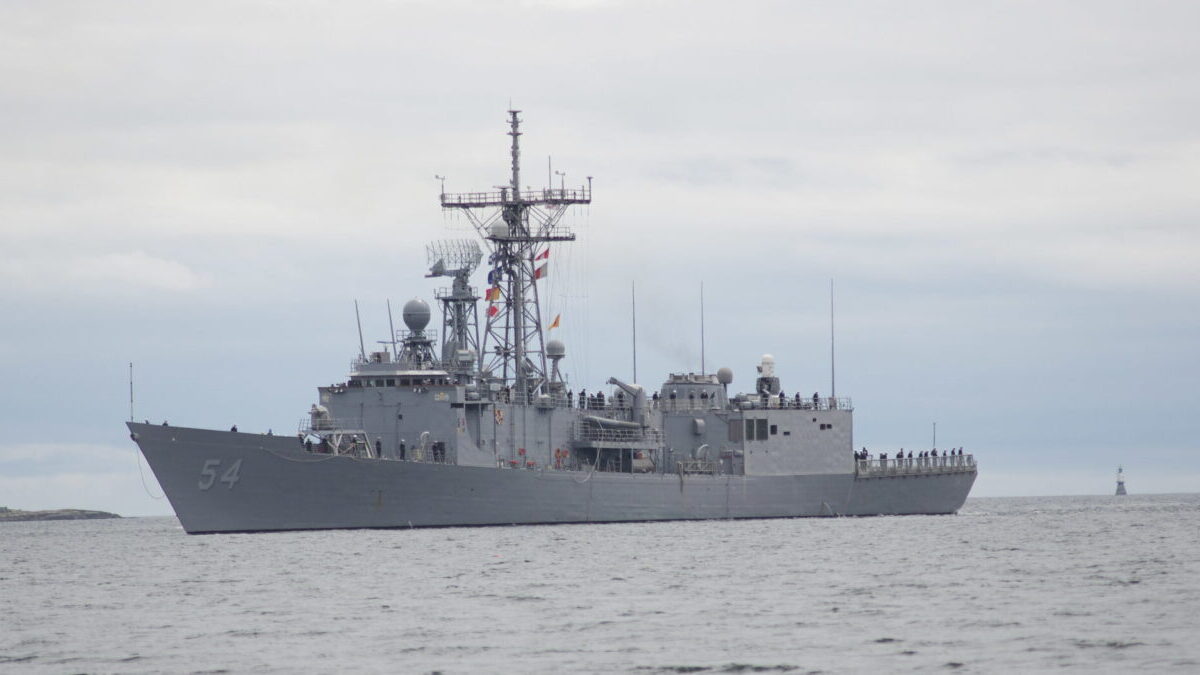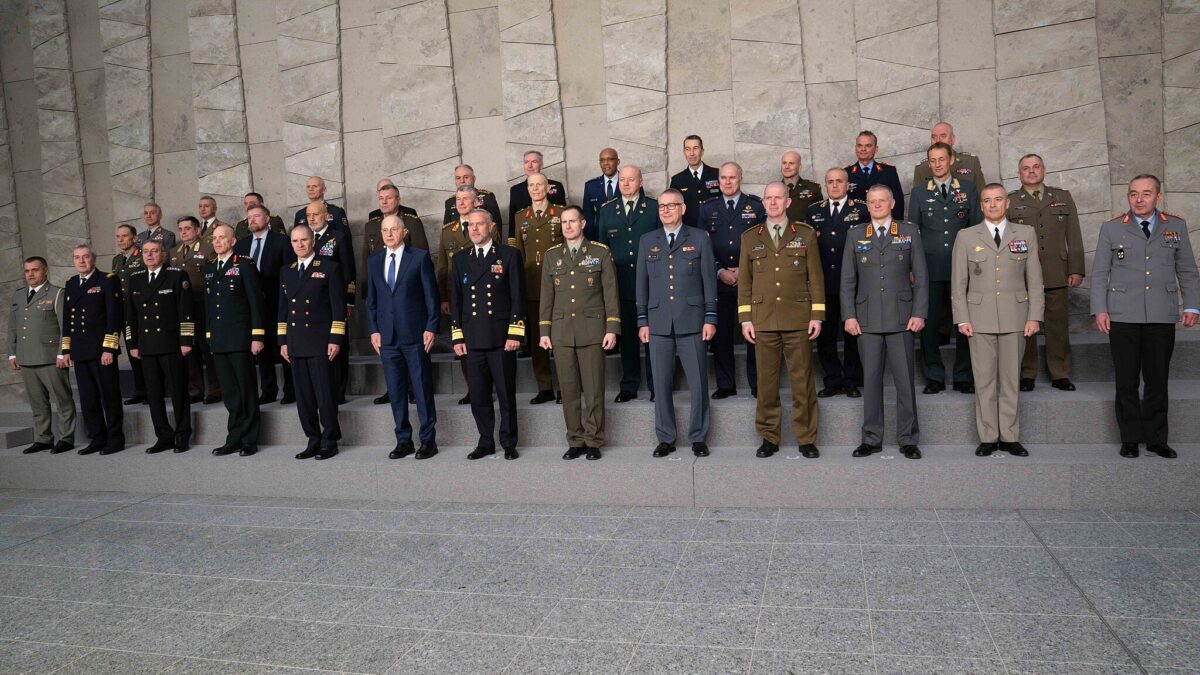The U.S. response to Hamas’ Nazi-like massacre of Israelis, Americans, and anyone else in its murderous path has been, almost without exception, robust. But U.S. officials are largely missing the larger picture and risking being drawn into an escalation — on the enemy’s terms.
Hamas and Hezbollah are the symptoms; Iran is the disease.
But President Biden’s Oval Office address to the nation on Oct. 19 danced around the core issue of Iran’s financing, training, and encouragement of violent, brutal forces across the region and beyond, as well as its nuclear missile program.
Thus, the gathering might of the U.S. Navy off the coast of Israel in the form of two aircraft carrier strike groups and a Marine Expeditionary Unit betrays unimaginative, linear thinking.
If used, American firepower would augment Israel’s own considerable military force. In theory, this threat helps to deter Hezbollah from unleashing its arsenal of 100,000 missiles on Israel, many of them sophisticated.
But, like Hamas, Hezbollah is expert at digging. They hide their missile launchers in an extensive network of tunnels and bunkers — all guarded by an air defense network that is likely to get lucky enough times to raise the specter of captured American pilots.
The last time U.S. naval aviation operated over Lebanon was in 1983, in response to the Beirut barracks bombing in October — an attack that Iranian authorities arrogantly claimed credit for in the past month. Until 9/11, it was the deadliest terror attack on Americans. Two months later, the Syrian military fired on U.S. Navy aircraft, shooting down two A-6 attack jets and capturing an officer.
Optimal Use of U.S. Air Force and Navy
If the incremental addition of American airpower is helpful to the pending effort to destroy Hamas while deterring a wider conflict, that role can more than adequately be filled by the U.S. Air Force.
The U.S. Navy should instead be concentrating 2,000 miles to the east in the Gulf of Oman and the Arabian Sea. There, the U.S. Navy would be playing to its unambiguous strength, enforcing sanctions against Iran by controlling the sea lines of communication that Iran depends on to generate the cash for its empire of terror.
Unfortunately, this would require a Biden administration that was both imaginative and strategic — and not in the thrall of a recently revealed Iranian influence operation that managed to place several advisors friendly to the Iranian mullahs in key national security positions since the Obama administration. Chief among these, Robert Malley, a longtime friend of Secretary of State Antony Blinken and an architect of the Joint Comprehensive Plan of Action (JCPOA) with Iran, a deal that focused exclusively on Iran’s nuclear program, rewarding the mullahs with cash and sanctions relief while greenlighting their missile program and global support for terror.
Iran’s Nuclear Program
Instead, Biden’s systematic appeasement of Iran, a continuation of the Obama-era policy that weirdly sought to use Iran as a counter to perceived Israeli intransigence on the Palestinian problem, has resumed. Up until the gruesome events of Oct. 7, Biden’s national security team was willfully blind to Iran’s bloody history of sponsoring terror and its determined drive to produce nuclear weapons and missiles to deliver them.
As a result, U.N. sanctions against Iran’s nuclear, missile, and drone program — never well enforced by Biden — expired on Oct. 18 with the U.S. announcing its own unilateral set of sanctions. The U.S. continues to pretend these efforts are somehow slowing Iran’s drive to push its nuclear program to completion, while Russian use of Iranian combat drones in Ukraine reveals the prior sanctions regime as inadequate to the task.
Reagan-Era Lessons
The U.S. never fully grappled with the Iranian theocracy after the shah was toppled in 1979. During the Cold War, it was assumed that the Soviet Union would come to Iran’s aid and that the military cost of defeating the regime would be too high.
Instead, the U.S. was content to see Iran tied down in a bloody stalemate against Iraq after the latter invaded in 1980.
As the war started to threaten oil exports out of the Gulf, America responded by providing a U.S. Navy escort to six Kuwaiti-owned super tankers in July 1987.
After an escorting U.S. Navy ship struck a mine on April 14, 1988, the Reagan administration responded only four days later with Operation Praying Mantis. It was the Navy’s largest combat action since World War II, sinking an Iranian guided missile frigate, crippling a second, sinking four other boats, and destroying two militarized oil platforms at the cost of one helicopter with two crew lost.
The operation was thoroughly wargamed a year before, when it was determined that an unambiguously aggressive response to Iran would likely prevent the conflict from escalating. In other words, a disproportionate response would rob Iran of the ability to control the timing and mode of escalation, reducing U.S. casualties and preserving the peace.
Applying Force
This lesson from the Reagan era opens up a final consideration. Rather than following through on the foolish precedent of incentivizing hostage-taking via negotiation and cash payments, America should ditch the carrots and pick up the stick.
Imagine the transformative discussion over the current hostage crisis — and the forestalling of future hostage-taking by Iran and its proxies — if the U.S. were to announce that every hostage taken is worth $1 billion (or $1.171 billion if we wish to account for Bidenflation). That amount would be deducted from seized Iranian assets or taken from oil tankers filled with Iranian oil. The proceeds would compensate hostages and their families, with the remainder used to replenish the Pentagon’s waning stocks of armaments.
This is exactly the kind of naval power application the U.S. Navy was built for.
Unfortunately, the radical cadres infesting the Biden administration’s national security staff would never allow such an idea to reach the desk of our cognitively impaired commander-in-chief.









